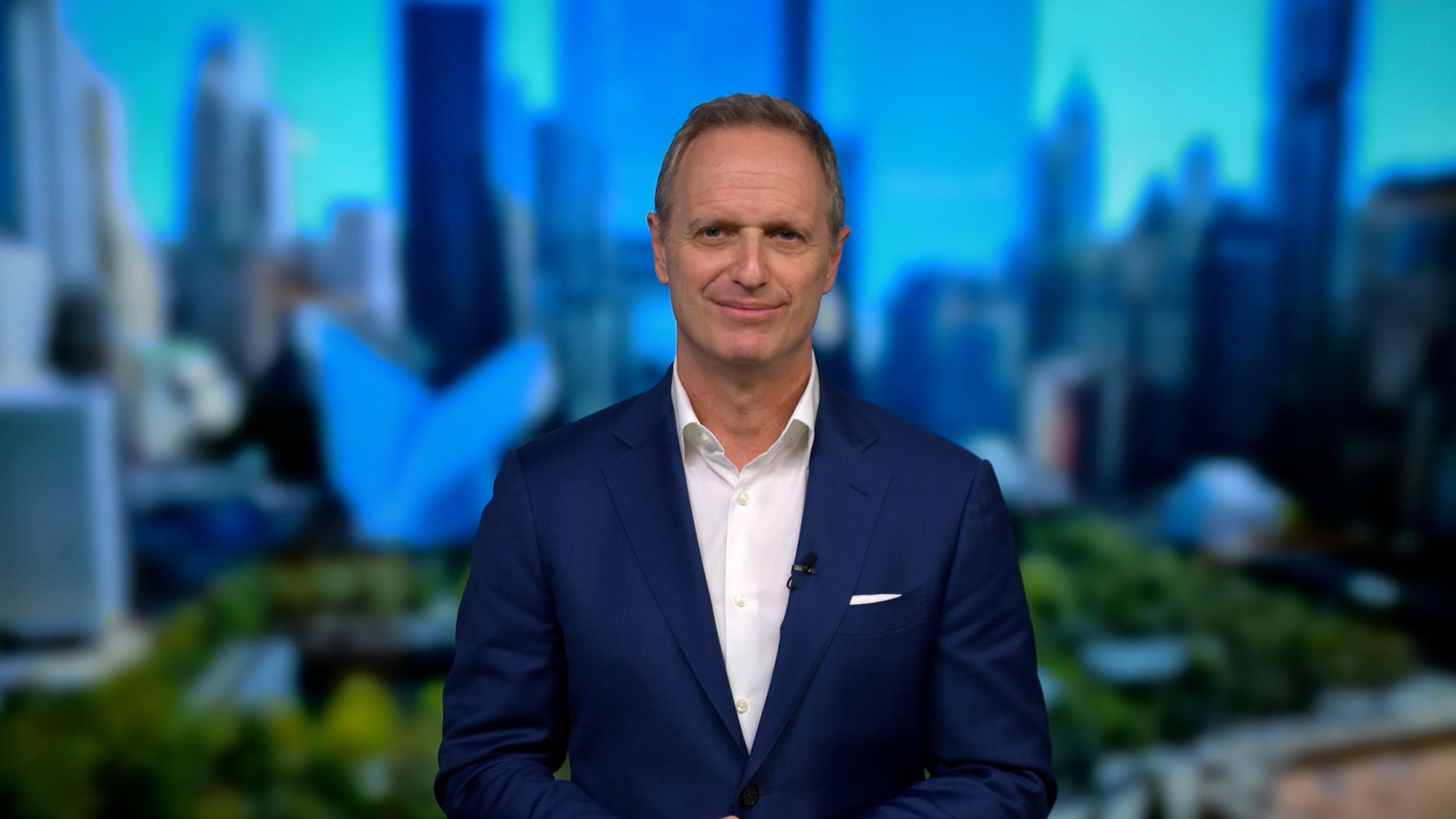
Alternatives Investing with the fear factor
Tariff, trade war, and market volatility headlines can make investors fearful. It's unsettling, but fear can also create opportunities.
Craig Altholz:
Matt, when we think about valuations or marketplace we often talk about credit spreads. And right now credit spreads look tight at least optically. How do you think about credit spreads. Are they tight right now. Where do you see spreads going?
Matt Brill:
Yeah that's a great question Craig. And one we get quite often right now. Credit spreads are tight.
There's really no way around that. They certainly are on the tighter end of the range of the last decade. But we actually think there's several reasons for that and plenty of reasons to believe they're actually going to go tighter from here. So they're not quite as tight as you might look or might think, when you look at them.
So a few reasons. One, the liquidity of the market is better than it's ever been. The invention of the portfolio trade, the easy way to move baskets of bonds back and forth between investors and dealers and ETFs has really enhanced liquidity and really should reduce the enhanced premium that you need to own, to own credit. The second reason I would say is the credit quality is much better than it's ever been or better than it's been recently, at least the lower end of the market.
The Triple B's is at a much lower percentage than it used to be. A single A's have increased as well, so credit quality is good. In addition to that, you also have the the duration of the indices. The duration of the bonds is significantly shorter than it has been in the past. So you've got shorter bonds by about two years shorter than before.
The shorter the bond, the less spread you should need in order to be compensated out of out of treasuries. And then last dollar price. So go back to 2022. All the the losses that occurred on mark to market level really dragged down the average dollar price of the market. So dollar prices, the less that you put in, the less spread you have or less dollars you have at risk, the less spread you should need to get.
So lower dollar price, lower lower duration, better credit quality, and much better liquidity we think leads to lower spreads and actually going tighter from here for several other reasons as well.
CA:
So when we look at our market, we think about it, we think about valuations. But we also pair that with a lens on fundamentals as well as technicals. And when we say technicals we're really just talking about supply and demand. And I know you've seen a lot of buyers in the market over the past call it 18 months that have been buying yield, not spread. Can you talk about how the market is developing in terms of technicals and fundamentals and what that ultimately means for medium-term, medium- term return expectations for investment grade credit?
MB:
Yeah. So with valuations tight you know why would I think that there's still compelling reasons why they could go tighter. Well fundamentals is the first one. So fundamentals really really attractive. Most corporations were expecting a recession or most economists were expecting a recession. And telling all these corporations you better be ready because there's going to be a recession coming.
Well guess what? The recession still has not happened. But corporations balance sheets are really, really, shored up and in good order in order to get ready for this recession that never came. So corporations balance sheets are really good shape. Overall, companies are still making the right decisions regarding financial policy. We are watching M&A to make sure that companies aren't levering up in order to buy their competitors.
But overall, really, really good from a fundamental standpoint, the economy's going really well as well. What feels like a wind at your back. But valuations are tight. So on spread, valuations are very attractive however on yields. So if we look at all in yields they are attractive. And most investors are buying based on yield. They're not buying based on spreads.
So with yields where they are yields are very attractive to high quality investors. You also have a lot of money in money markets funds, T-bills etc.. Somewhere around the magnitude of $6 trillion is in these front-end instruments that we think could get extended out. We're also seeing a lot of interest in annuities and pension plans, allocating to fixed income insurance companies, allocating to fixed time as well income as well.
So the overall technicals to the investment grade market as well as the market are extremely strong in technicals are buying yield not spread. So the only thing that's going to derail this is if fundamentals actually start to turn negative, which again, we don't think is going to happen. So valuations slightly less than attractive but probably going tighter due to very high quality fundamentals and improving fundamentals to go along with incredible demand for fixed income overall.
For US: Not a Deposit | Not FDIC Insured | Not Guaranteed by the Bank | May Lose Value | Not Insured by any Federal Government Agency
All data sourced to Invesco unless otherwise indicated.
Investment risks
Fixed-income investments are subject to credit risk of the issuer and the effects of changing interest rates. Interest rate risk refers to the risk that bond prices generally fall as interest rates rise and vice versa. An issuer may be unable to meet interest and/or principal payments, thereby causing its instruments to decrease in value and lowering the issuer’s credit rating.
Non-investment grade bonds, also called high yield bonds or junk bonds, pay higher yields but also carry more risk and a lower credit rating than an investment grade bond.
The risks of investing in securities of foreign issuers, including emerging market issuers, can include fluctuations in foreign currencies, political and economic instability, and foreign taxation issues.
The performance of an investment concentrated in issuers of a certain region or country is expected to be closely tied to conditions within that region and to be more volatile than more geographically diversified investments.
The opinions expressed are that of Invesco Fixed Income and may differ from the opinions of other Invesco investment professionals. Opinions are based upon current market conditions, and are subject to change without notice. As with all investments, there are associated inherent risks. Please obtain and review all financial material carefully before investing. Asset management services are provided by Invesco in accordance with appropriate local legislation and regulations.
Yield Curve: A yield curve is a curve showing several yields to maturity or interest rates across different maturity lengths for a similar debt contract.
Credit Spread: is the difference in yield between bonds of similar maturity but with different credit quality.
For US audiences:
All data provided by Invesco unless otherwise noted.
Invesco Advisers, Inc. is an investment adviser; it provides investment advisory services to individual and institutional clients and does not sell securities. Invesco Distributors, Inc. is the US distributor for Invesco’s retail products. Both are indirect, wholly owned subsidiaries of Invesco Ltd.
©2024 Invesco Ltd.
All rights reserved.
For Canadian audiences:
Commissions, trailing commissions, management fees and expenses may all be associated with mutual fund investments. Mutual funds are not guaranteed, their values change frequently, and past performance may not be repeated. Please read the simplified prospectus before investing. Copies are available from your advisor or from Invesco Canada Ltd.
Most references are US centric and may not apply to Canada. All data is USD, unless otherwise stated.
Publication date: Dec 6, 2024
Invesco® and all associated trademarks are trademarks of Invesco Holding Company Limited, used under
license.
©2024 Invesco Canada Ltd
Invesco is a registered business name of Invesco Canada Ltd. Invesco Canada Ltd. is an indirect, wholly owned subsidiary of Invesco Ltd.
This document is issued in:
NA4069207
Tighter credit spreads are supported in today’s market by improved corporate health, shorter bond durations, and increasing demand for yield.

Tariff, trade war, and market volatility headlines can make investors fearful. It's unsettling, but fear can also create opportunities.

Municipal bonds, with their compelling yields and value, can help diversify a portfolio and mitigate risk in an uncertain environment.

High-quality bonds have provided a much-needed stabilizing force in portfolios during recent market volatility. Stephanie Larosiliere, Head of Fixed Income Business Strategy & Development, North America, explains how.
NA4211381
The opinions expressed are that of Invesco Fixed Income and may differ from the opinions of other Invesco investment professionals. Opinions are based upon current market conditions, and are subject to change without notice. As with all investments, there are associated inherent risks. Please obtain and review all financial material carefully before investing. Asset management services are provided by Invesco in accordance with appropriate local legislation and regulations.
All data provided by Invesco unless otherwise noted.
This link takes you to a site not affiliated with Invesco. The site is for informational purposes only. Invesco does not guarantee nor take any responsibility for any of the content.